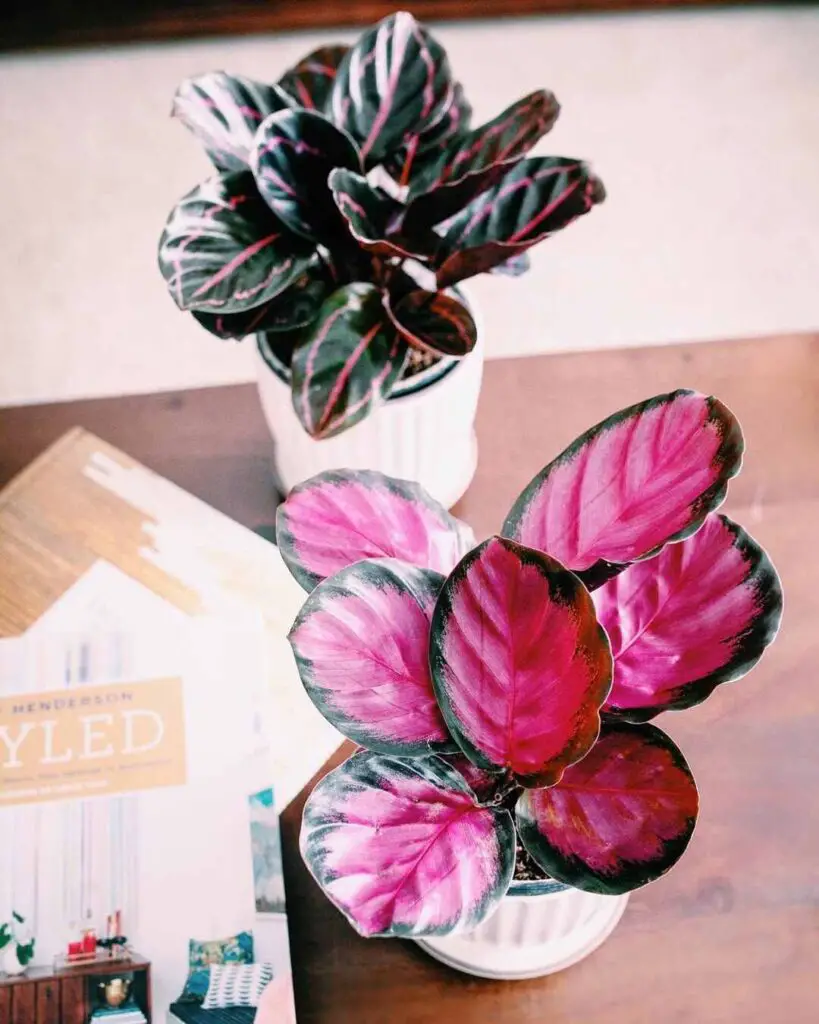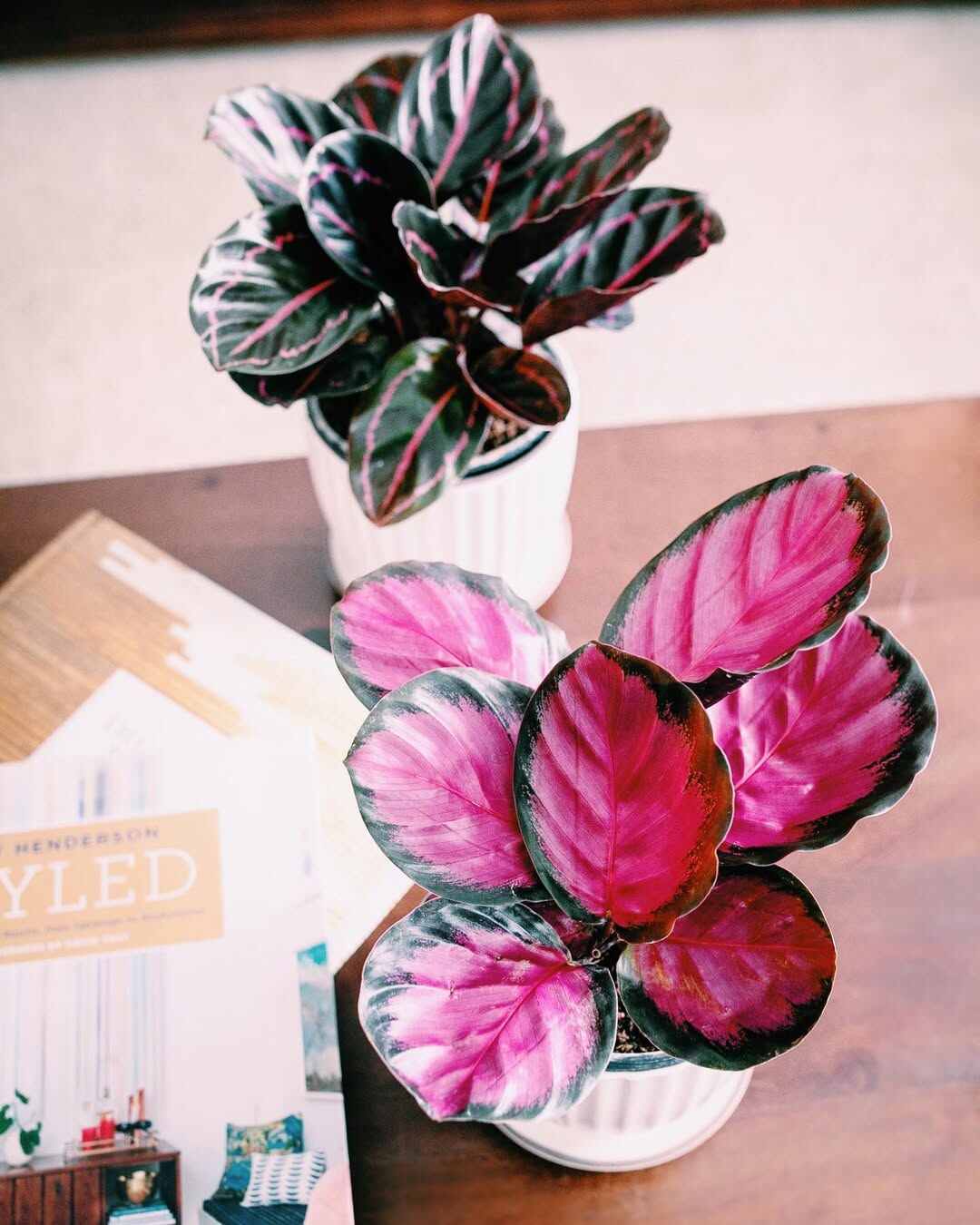The Rose Painted Calathea is an exotic, stunning plant known for its vibrant foliage. One of the most frequently asked questions by plant enthusiasts is about its size. Understanding the Rose Painted Calathea size is crucial for ensuring proper care, placement, and growth expectations.
This plant’s size can vary depending on its environment, the pot it’s in, and the care it receives. Knowing its potential size will help you make informed decisions about where to place it in your home and how to prune it for optimal health and appearance.

Rose Painted Calathea Typical Size
The typical size of a Rose Painted Calathea can vary depending on growing conditions, but in general, it tends to be a medium-sized plant. On average, it reaches a height of about 18 to 24 inches (45 to 60 cm) and can spread up to 24 inches (60 cm) wide.
- Height: When fully matured, it typically grows to around 18 to 24 inches.
- Width: The plant’s foliage tends to spread out, reaching up to 24 inches across.
- Growth Habit: The Rose Painted Calathea tends to have a bushy growth pattern with large, striking leaves.
This size makes it a great choice for indoor spaces where it doesn’t require excessive space but still adds a bold, decorative touch. Regular pruning can also help manage its size and encourage a fuller, bushier look.
Factors Affecting Rose Painted Calathea Size
Several factors can influence the size of a Rose Painted Calathea, from the environment to how it’s cared for. Understanding these influences can help you manage its growth more effectively.
- Light Exposure: Adequate light is essential for healthy growth. While the Rose Painted Calathea thrives in indirect or filtered light, too much direct sunlight can stunt its size, causing the leaves to burn and growth to slow down.
- Watering and Humidity: This plant prefers a humid environment, and lack of moisture can limit its growth. Regular watering and misting the leaves will help maintain optimal humidity levels, promoting robust growth.
- Pot Size: The size of the pot plays a significant role in the growth of your plant. A larger pot provides more space for the roots to expand, leading to a potentially larger plant, while a small pot can restrict its growth.
By controlling these factors, you can guide the Rose Painted Calathea toward reaching its full size potential in your home.
Tips to Promote Rose Painted Calathea Growth
If you’re looking to encourage the Rose Painted Calathea to grow to its full potential, certain care techniques can make a significant difference in its size and overall health. By optimizing the conditions for your plant, you can help it thrive.
- Provide Consistent Moisture: Keep the soil consistently moist, but not waterlogged. Over-watering can cause root rot, while under-watering can stunt growth. Make sure the pot has good drainage to avoid excess water.
- Increase Humidity: Rose Painted Calatheas thrive in high humidity. If your home is dry, consider using a humidity tray or a room humidifier to maintain moisture levels around the plant. Regular misting also helps boost humidity.
- Regular Feeding: During the growing season, feed your plant with a balanced, water-soluble fertilizer every 4 to 6 weeks. This will provide the necessary nutrients for healthy leaf growth and overall plant development.
With these simple adjustments, you can encourage your Rose Painted Calathea to grow larger and stronger, achieving the vibrant, full look you desire.
Common Issues and Solutions for Rose Painted Calathea Growth
Like any plant, the Rose Painted Calathea may face some challenges during its growth. Understanding these common problems and their solutions will help you keep your plant healthy and thriving.
- Leaf Browning: One of the most common issues is leaf browning, especially on the tips. This is often due to low humidity or inconsistent watering. To resolve this, increase the humidity by misting the leaves regularly or using a humidifier. Ensure the plant is not being overwatered, and always check the soil moisture before adding water.
- Pest Infestation: Rose Painted Calatheas are susceptible to pests like spider mites, aphids, and mealybugs. Regularly inspect the plant for any signs of pests. If you spot any, gently wipe the leaves with a damp cloth or use insecticidal soap to treat the plant.
- Stunted Growth: If the plant’s growth seems stunted, it could be a sign of inadequate light or a root-bound pot. Ensure the plant is receiving enough indirect light and consider repotting it into a slightly larger container to give the roots more space to expand.
By addressing these challenges with the right care strategies, your Rose Painted Calathea will have a better chance of flourishing in your home.
Repotting and Transplanting Rose Painted Calathea
Repotting your Rose Painted Calathea is an essential part of maintaining its health and encouraging growth. Over time, the plant can outgrow its pot, and repotting provides more space for the roots, improving overall growth and preventing root-bound conditions.
- When to Repot: Typically, repotting is needed every 1 to 2 years, or when the plant has outgrown its current pot. Signs that it’s time to repot include roots growing out of the drainage holes or the plant showing signs of stunted growth despite proper care.
- Choosing the Right Pot: When selecting a new pot, choose one that is 1-2 inches larger in diameter than the current one. This allows room for the roots to grow without being too large, which could result in overwatering and root rot.
- Repotting Steps: Gently remove the plant from its pot and inspect the roots. Trim any dead or unhealthy roots. Place fresh, well-draining soil in the bottom of the new pot, position the plant in the center, and fill around the roots with more soil. Water thoroughly after repotting to help the plant settle in.
By repotting your Rose Painted Calathea when needed, you ensure it has the proper space to grow and thrive for years to come.
Final Thoughts
Repotting your Rose Painted Calathea, along with proper care and attention to its environment, can greatly enhance its size and overall health. By addressing common challenges and providing the right conditions, you’ll enjoy a thriving, vibrant plant that will brighten up any space.

I’m Shofi, a passionate gardener and blogger. I have 10+ years of experience in gardening and hold certifications in horticulture and garden design. I share my knowledge and skills through my garden blog to inspire and educate others on the joys of gardening. I try to provide valuable information and create a community for gardeners of all levels to connect and learn. My ultimate goal is to inspire others to start their own gardens and connect with nature.

